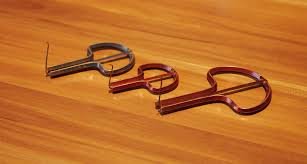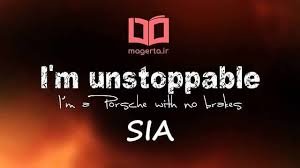
jaw harp
Introduction to the Jaw Harp
The Jaw Harp, also known by various names such as Morsing, Jew’s Harp, Vargan, or Kubing, is one of the oldest and most fascinating musical instruments in the world. Often considered a “miracle of minimalism”, it is small, portable, and yet capable of producing rich, complex sounds using a simple vibrating tongue. This unique instrument, found in many cultures from Asia to Europe, works by placing it against the teeth or lips and plucking its metal reed to create vibrations, which are then amplified by the player’s mouth and throat. Its raw, vibrating timbre and meditative overtones have made it a favorite in both traditional folk music and modern experimental genres.
Historical Origins of the Jaw Harp
The exact origins of the jaw harp remain a subject of scholarly debate, but it is widely accepted that this instrument dates back to at least 300 BCE. Archaeological evidence shows that versions of the jaw harp have been discovered in China, Siberia, and Austria, indicating its wide cultural reach and ancient roots. In India, the instrument is called the Morsing and is used in Carnatic classical music. In the Philippines, the bamboo Kubing has been a part of indigenous traditions for centuries. Its widespread use in different civilizations showcases how various cultures independently developed a similar vibrating reed instrument, driven by the universal human fascination with rhythm and sound.
How the Jaw Harp Works
The mechanics of the jaw harp are deceptively simple. The instrument consists of a flexible metal or bamboo tongue, or lamella, which is fixed at one end to a frame. When plucked, the tongue vibrates at a base frequency. These vibrations travel into the player’s mouth, which acts as a resonating chamber. By changing the shape of the mouth, position of the tongue, and throat opening, players can alter the pitch, volume, and tone of the sound. Unlike most instruments, where fingers or breath create melody, in the jaw harp, the human body itself becomes part of the acoustic system.
Types and Regional Variations
Across the globe, different cultures have developed their own types of jaw harps, each with distinct characteristics in terms of material, tuning, and playing techniques.
- The Morsing from South India is typically made of iron or brass and is used as a rhythmic accompaniment in Carnatic music concerts.
- The Kubing from the Philippines is crafted from bamboo and used for both storytelling and courtship rituals.
- In Russia and Siberia, the Vargan is made with high-precision steel and used in shamanic and meditative practices.
- In Vietnam, the instrument is known as the Dan Moi, often made of brass and held against the lips rather than the teeth.
Each version of the jaw harp has its own sound and purpose, reflecting the cultural identity of the community it comes from.
Playing Techniques and Skill Development
Although the jaw harp may look simple, mastering it requires skill and practice. Beginners typically start with learning basic plucking techniques, which involve striking the lamella in a consistent rhythm. Once the rhythm is steady, players move on to breath control, mouth shaping, and throat modulation to produce melodic overtones. Advanced players can create intricate rhythms, mimic animal calls, and even simulate drum-like sounds. Some musicians use circular breathing, beatboxing, or integrate the jaw harp with loop pedals and live effects to expand its musical possibilities.
Jaw Harp in Traditional Music
The jaw harp holds a sacred place in many traditional music systems. In India, the Morsing accompanies instruments like the Mridangam and Veena in classical performances, maintaining rhythmic cycles known as Talas. In Mongolia and Tuva, the jaw harp is often played alongside throat singing to create a rich, layered auditory experience. In Europe, particularly Austria, Norway, and Hungary, the jaw harp was part of folk dances and rural celebrations. Its hypnotic tone has long been associated with rituals, storytelling, and nature-based ceremonies.
Modern Applications and Revival
While the jaw harp nearly faded into obscurity during the industrial and digital eras, it has seen a strong revival in the 21st century. Musicians around the world are rediscovering the instrument for its unique tone and organic sound, which stands in stark contrast to overly produced digital music. Artists in genres like ambient, electronic, experimental, and world fusion are increasingly incorporating the jaw harp into their compositions. Its portability and compatibility with live looping and digital effects make it an ideal choice for street performers, solo artists, and live sets.
Therapeutic and Meditative Uses
Beyond its musical appeal, the jaw harp has found a niche in the realms of sound therapy and meditation. The low-frequency vibrations it generates can resonate through the body, offering a calming and grounding effect. In sound healing circles, the jaw harp is used for chakra balancing, emotional release, and energetic cleansing. The act of playing also demands focused breathing, mental stillness, and bodily awareness, making it a perfect tool for mindfulness and relaxation. Some practitioners even compare the effects of jaw harp vibrations to singing bowls or didgeridoos.
Where to Buy and What to Look For
If you’re interested in purchasing a jaw harp, there are a number of trusted online stores and instrument makers that offer quality instruments. Websites like JawHarp.com, Dan Moi, and Amazon provide a range of jaw harps from beginner to professional levels. When buying a jaw harp, consider the following factors:
- Material: Steel and brass are common for metal jaw harps; bamboo is used for more traditional styles.
- Tuning: Some jaw harps are tuned to specific keys (C, D, G), while others are untuned.
- Size and Flexibility: A smaller, tighter reed gives higher pitches, while larger reeds produce deeper sounds.
- Style of Playing: Do you want a lip-held or teeth-held harp?
Reading user reviews and watching demo videos can help you find the right instrument for your style and purpose.
Jaw Harp in Pop Culture
Though often considered a niche instrument, the jaw harp has made surprising appearances in pop culture and film soundtracks. For instance, it was used in classic spaghetti westerns, notably in the works of Ennio Morricone, to create the soundscape of vast deserts and tension. The instrument has also featured in folk rock, psychedelic music, and even video game soundtracks. Its quirky, twangy sound gives it a timeless, almost mysterious character that resonates with listeners across genres.
Communities and Learning Resources
Thanks to the internet, it’s now easier than ever to learn and connect with fellow jaw harp players. There are vibrant communities on Reddit, Facebook, and forums dedicated to traditional instruments. YouTube channels such as GotJawHarp, DanMoi Music, and Jaw Harp Addict offer lessons, reviews, and performance videos. For more structured learning, some websites offer online courses and Skype tutorials with professional players.
Conclusion: Why the Jaw Harp Is More Than Just a Hobby
The jaw harp is more than just a simple musical instrument—it is a bridge between ancient traditions and modern creativity, between the physical body and resonant sound. Its enduring appeal lies in its accessibility, expressiveness, and mystical quality. Whether you’re a musician, a meditator, or simply someone curious about global instruments, the jaw harp offers an entryway into a rich world of rhythm, tone, and introspection. With a low barrier to entry and infinite possibilities for mastery, it remains one of the most rewarding instruments for self-expression and exploration.






